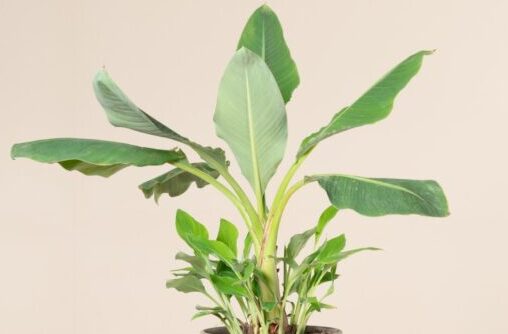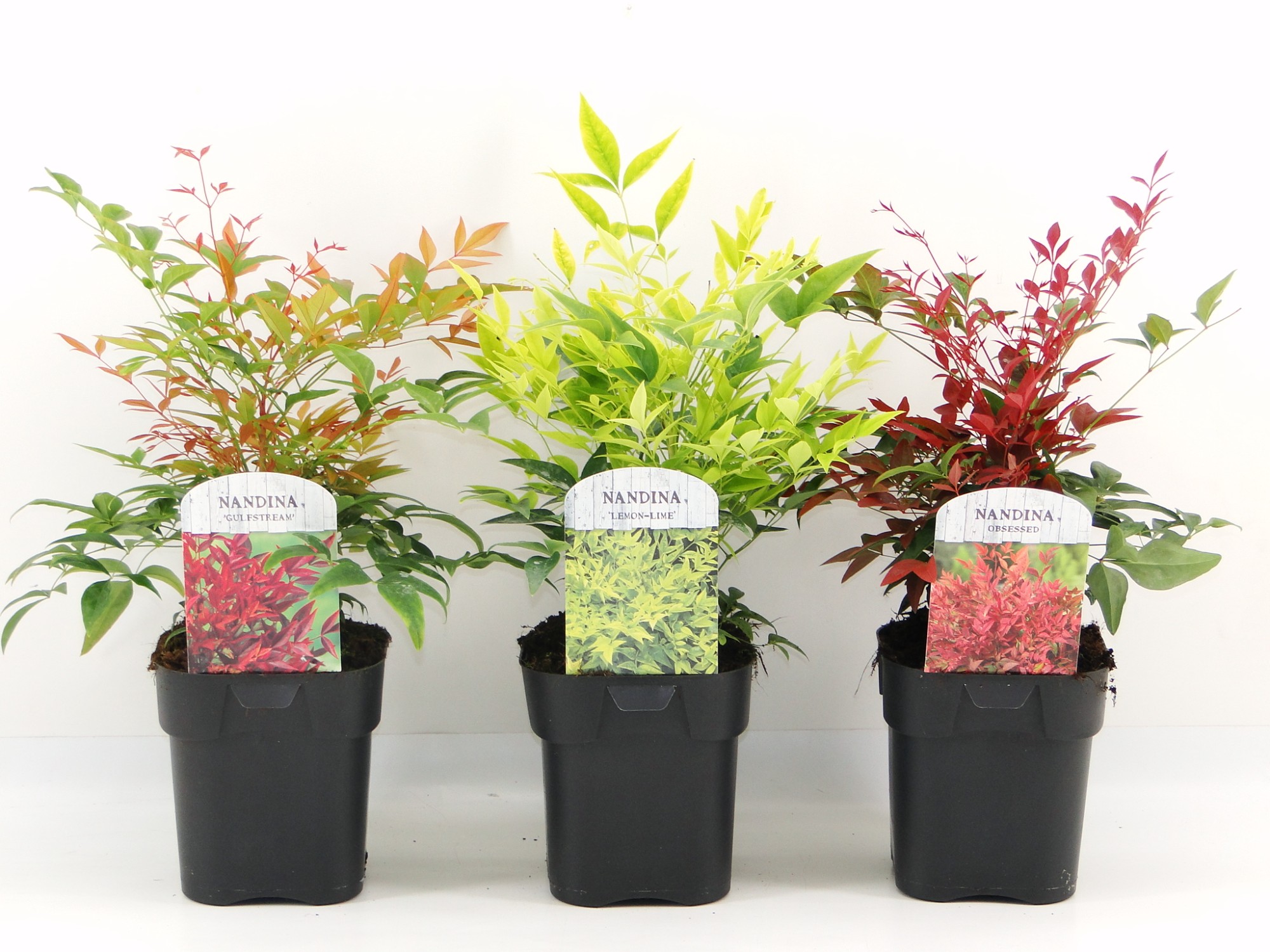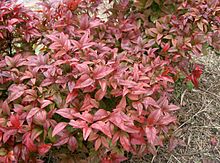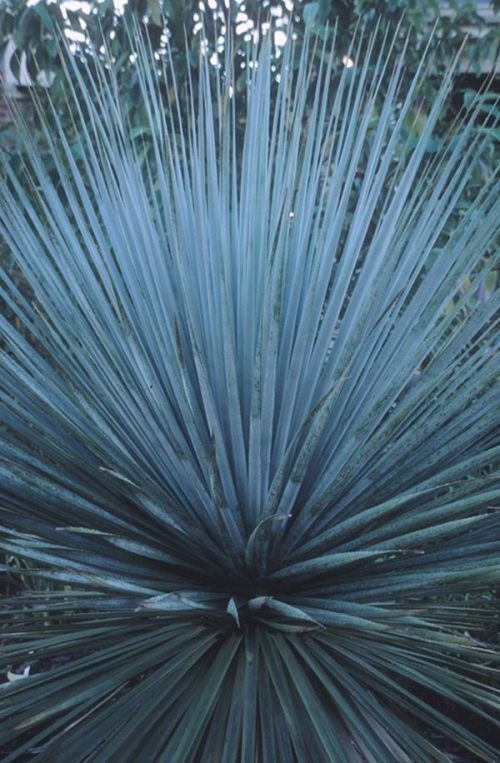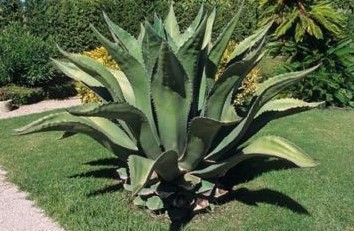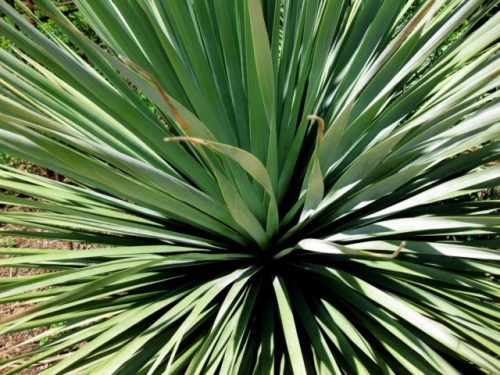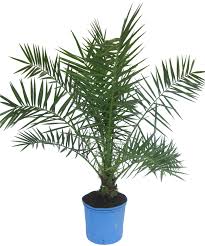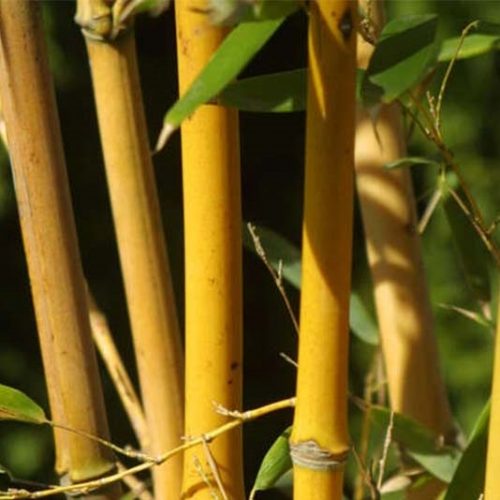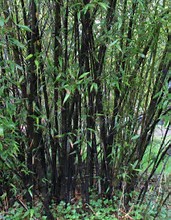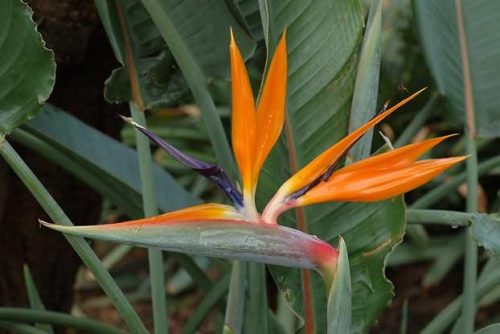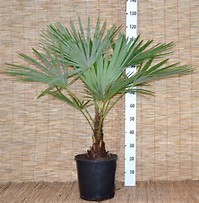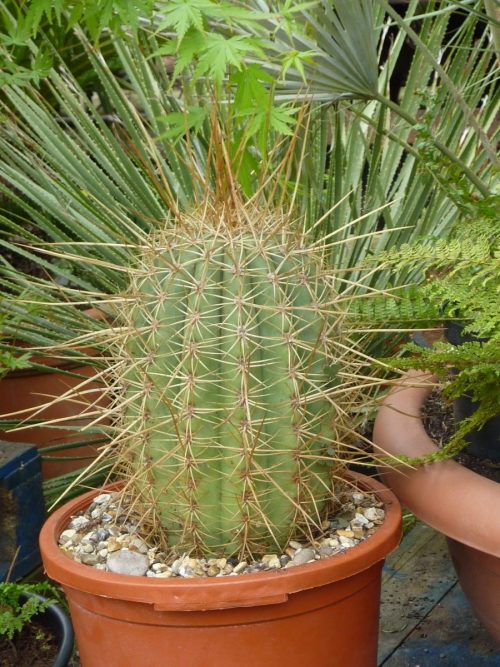-
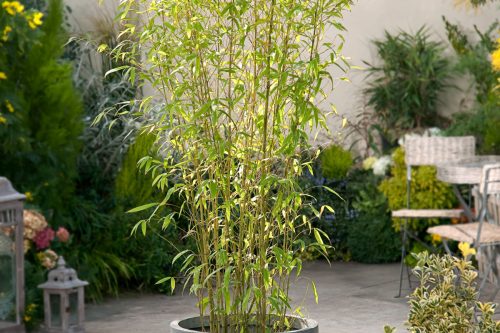 Phyllostachys Aurea (Yellow Bamboo) is originally from China and grows up to 4-6 m, it is clump forming and withstand -18c. The canes of Phyllostachys Aurea (Yellow Bamboo) are a soft yellow in the sun and olive green in the shade, excellent for hedging, screening, and isolated clumps or a potted specimen.
Phyllostachys Aurea (Yellow Bamboo) is originally from China and grows up to 4-6 m, it is clump forming and withstand -18c. The canes of Phyllostachys Aurea (Yellow Bamboo) are a soft yellow in the sun and olive green in the shade, excellent for hedging, screening, and isolated clumps or a potted specimen. -
 This is one of many Phyllostachys species that are superficially 'just' plain green but Phyllostachys bissetii stands out from the crowd because it excels at what it does - it is extremely hardy and tolerant. It is one of the freshest looking bamboos at winter's end - its thickly growing foliage and densely clustered canes are almost completely windproof, thereby making a perfect screening or hedging plant. Ultimately a running bamboo, Phyllostachys bissetii benefits from barrier protection although it can remain compact for some years before taking off.
This is one of many Phyllostachys species that are superficially 'just' plain green but Phyllostachys bissetii stands out from the crowd because it excels at what it does - it is extremely hardy and tolerant. It is one of the freshest looking bamboos at winter's end - its thickly growing foliage and densely clustered canes are almost completely windproof, thereby making a perfect screening or hedging plant. Ultimately a running bamboo, Phyllostachys bissetii benefits from barrier protection although it can remain compact for some years before taking off. -
 A new addition from Japan a fabulous architectural palm and perfect for the smaller garden. ‘Miniature’ is somewhat misleading as this relates to the stiff-leaves which even on mature tress are no more than a couple of feet across, half that of the Trachycarpus Fortunei. It is considerably more wind tolerant than its cousins and for this reason this is perfect on more exposed sites – a must for every garden.
A new addition from Japan a fabulous architectural palm and perfect for the smaller garden. ‘Miniature’ is somewhat misleading as this relates to the stiff-leaves which even on mature tress are no more than a couple of feet across, half that of the Trachycarpus Fortunei. It is considerably more wind tolerant than its cousins and for this reason this is perfect on more exposed sites – a must for every garden. -
 The papery flamboyant blooms and interesting foliage of tree peonies gives the impression that the plants are delicate. Thankfully, the complete opposite is true. Tree peonies are long-lived, hardy shrubs provided they are grown in a suitable spot. The common name is misleading as they are not trees but deciduous shrubs.
The papery flamboyant blooms and interesting foliage of tree peonies gives the impression that the plants are delicate. Thankfully, the complete opposite is true. Tree peonies are long-lived, hardy shrubs provided they are grown in a suitable spot. The common name is misleading as they are not trees but deciduous shrubs.



